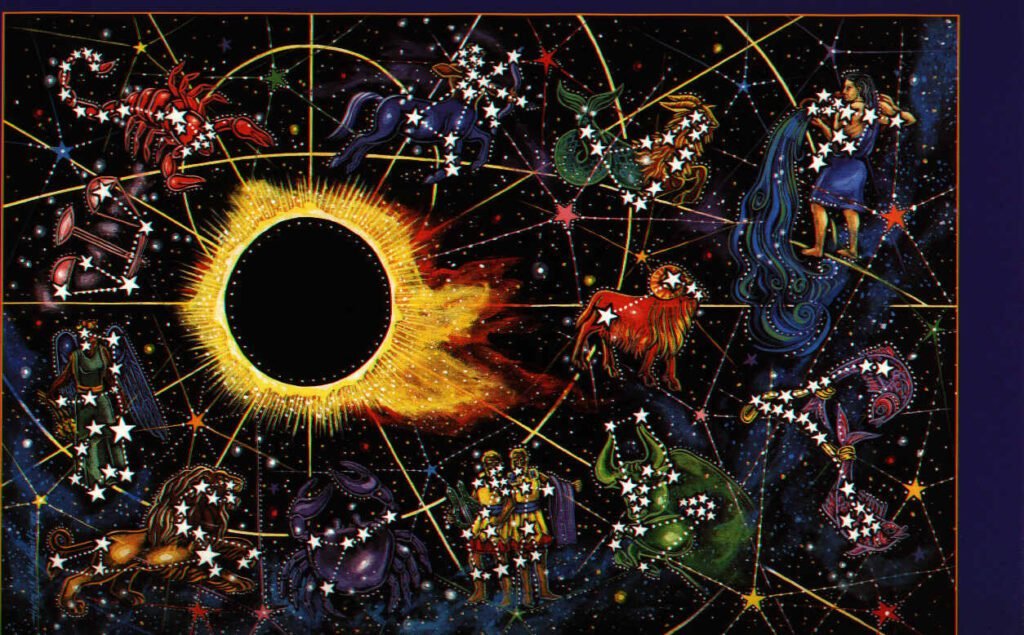The Vedic Astronomy of the Rigveda: Early Insights into Celestial Observations
The Rigveda, one of the oldest sacred texts of Hinduism, is renowned for its hymns and spiritual insights. However, it also contains valuable astronomical knowledge that reflects the early observations of celestial phenomena by the Vedic people. This article delves into the Vedic astronomy of the Rigveda, exploring its early insights into celestial observations and their significance.
1-Introduction to Vedic Astronomy
The Rigveda, composed around 1500–1200 BCE, is primarily a collection of hymns dedicated to various deities. While its primary focus is spiritual and ritualistic, it also offers glimpses into the astronomical knowledge of the time. The Vedic people had a sophisticated understanding of the cosmos, evidenced by their observations of celestial bodies and phenomena.
2-Celestial Bodies in the Rigveda
A-The Sun (Surya): The Sun is a prominent figure in the Rigveda, often described as a deity and a vital cosmic force. Hymns dedicated to the Sun highlight its importance in daily life and religious rituals.
- Verses: Hymns like Rigveda 1.115.1 describe the Sun’s role in creating day and night, emphasizing its significance in marking time and regulating agricultural activities.
- Observations: The Sun’s path across the sky, its rising and setting points, and its association with timekeeping are implicitly acknowledged in these hymns.
B-The Moon (Chandra): The Moon is also significant in Vedic astronomy. It is associated with timekeeping and is often mentioned in relation to the lunar phases.
- Verses: Hymns like Rigveda 10.85.1 refer to the Moon’s cycles, reflecting an understanding of its periodic changes and influence on the lunar calendar.
C-Stars and Constellations: The Rigveda contains references to various stars and constellations, though they are not always explicitly named.
- Verses: The term “Nakshatra” appears in the Rigveda, referring to lunar mansions or star clusters that played a role in Vedic astrology and calendar systems.
3-Astronomical Phenomena
A-Eclipses: The Rigveda mentions eclipses in metaphorical and symbolic terms, reflecting an early awareness of these celestial events.
- Verses: Hymns like Rigveda 5.40.5 describe the darkness of eclipses as a significant cosmic event, illustrating an understanding of their occurrence and impact.
B-Seasonal Changes: The Vedic people observed the changing seasons and their influence on agricultural activities, which is reflected in the Rigveda.
- Verses: The Rigveda contains hymns that align with the agricultural calendar, indicating an awareness of the seasonal changes and their impact on farming practices.
-
अभी जॉइन करें हमारा WhatsApp चैनल और पाएं समाधान, बिल्कुल मुफ्त!
हमारे ऐप को डाउनलोड करें और तुरंत पाएं समाधान!
Download the KUNDALI EXPERT App
हमारी वेबसाइट पर विजिट करें और अधिक जानकारी पाएं
संपर्क करें: 9818318303
4-Ritualistic and Calendar Applications
A-Timing of Rituals: The Rigveda underscores the importance of timing rituals according to celestial events. The alignment of rituals with astronomical occurrences demonstrates an early attempt to synchronize religious practices with celestial cycles.
- Verses: Hymns often specify the times for performing rituals, which align with celestial events such as solstices or equinoxes.
B-Calendar Systems: The Rigveda’s hymns reflect an implicit understanding of lunar and solar cycles, which were used to create calendars and mark significant religious festivals.
- Verses: The Rigveda’s hymns indicate a lunar calendar, with months and seasons determined by the Moon’s phases and the Sun’s position.
5-Implications of Vedic Astronomy
A-Influence on Later Texts: The astronomical knowledge embedded in the Rigveda influenced later Vedic texts and astronomical systems, including the Vedanga Jyotisha and Puranas.
- Legacy: The observations and concepts from the Rigveda laid the foundation for more detailed astronomical studies in subsequent texts.
B-Integration with Spiritual Practices: The integration of astronomical observations with spiritual and ritualistic practices reflects the holistic approach of Vedic culture, where science and spirituality were intertwined.
- Significance: The early insights into celestial observations helped shape Vedic rituals and cosmological understanding, influencing later Hindu traditions.
Conclusion
The Rigveda offers valuable early insights into Vedic astronomy, showcasing the Vedic people’s sophisticated observations of celestial phenomena. Although the text primarily serves a spiritual purpose, its references to the Sun, Moon, stars, and astronomical events reveal an advanced understanding of the cosmos. These early astronomical insights not only influenced subsequent Vedic texts but also laid the groundwork for the rich tradition of Indian astronomy. By studying the Rigveda’s celestial observations, we gain a deeper appreciation of the ancient Vedic worldview and its impact on the development of astronomical knowledge in India.

